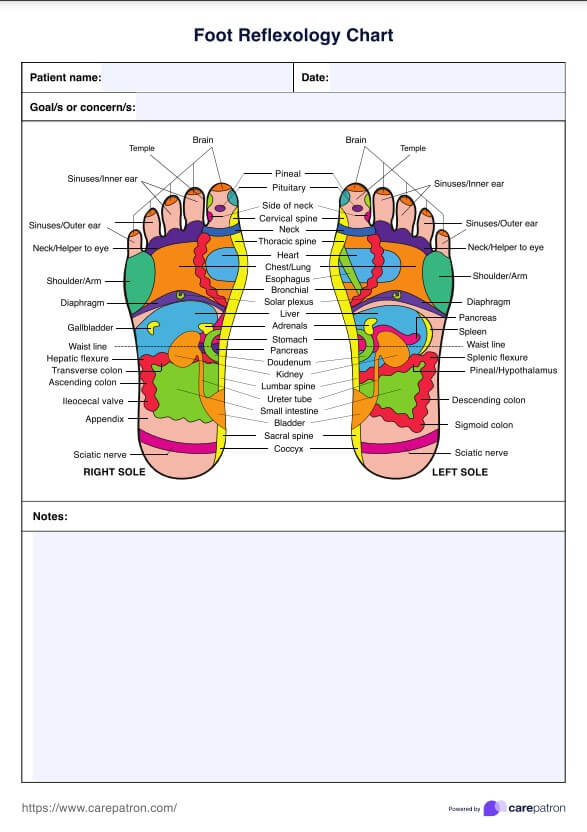Foot Reflexology Charts are primarily used by any certified reflexology and massage therapist. However, they can be used by a diverse audience, which includes healthcare professionals seeking to enrich their practice, reflexologists aiming for precision, and individuals intrigued by the potential of holistic wellness.

Foot Reflexology Charts
Explore foot reflexology through a user-friendly Foot Reflexology Chart. Download for free to provide clients with ultimate wellness and self-care.
Foot Reflexology Charts Template
Commonly asked questions
Foot Reflexology Charts are utilized in various contexts, with their application prevalent during reflexology sessions, wellness endeavors, and treatments encompassing a spectrum of bodily concerns.
The operational methodology of Foot Reflexology Charts entails their role as visual companions, aiding in identifying and activating specific reflex points residing upon the feet. These charts facilitate the art of relaxation and well-being through this tactile engagement.
EHR and practice management software
Get started for free
*No credit card required
Free
$0/usd
Unlimited clients
Telehealth
1GB of storage
Client portal text
Automated billing and online payments











